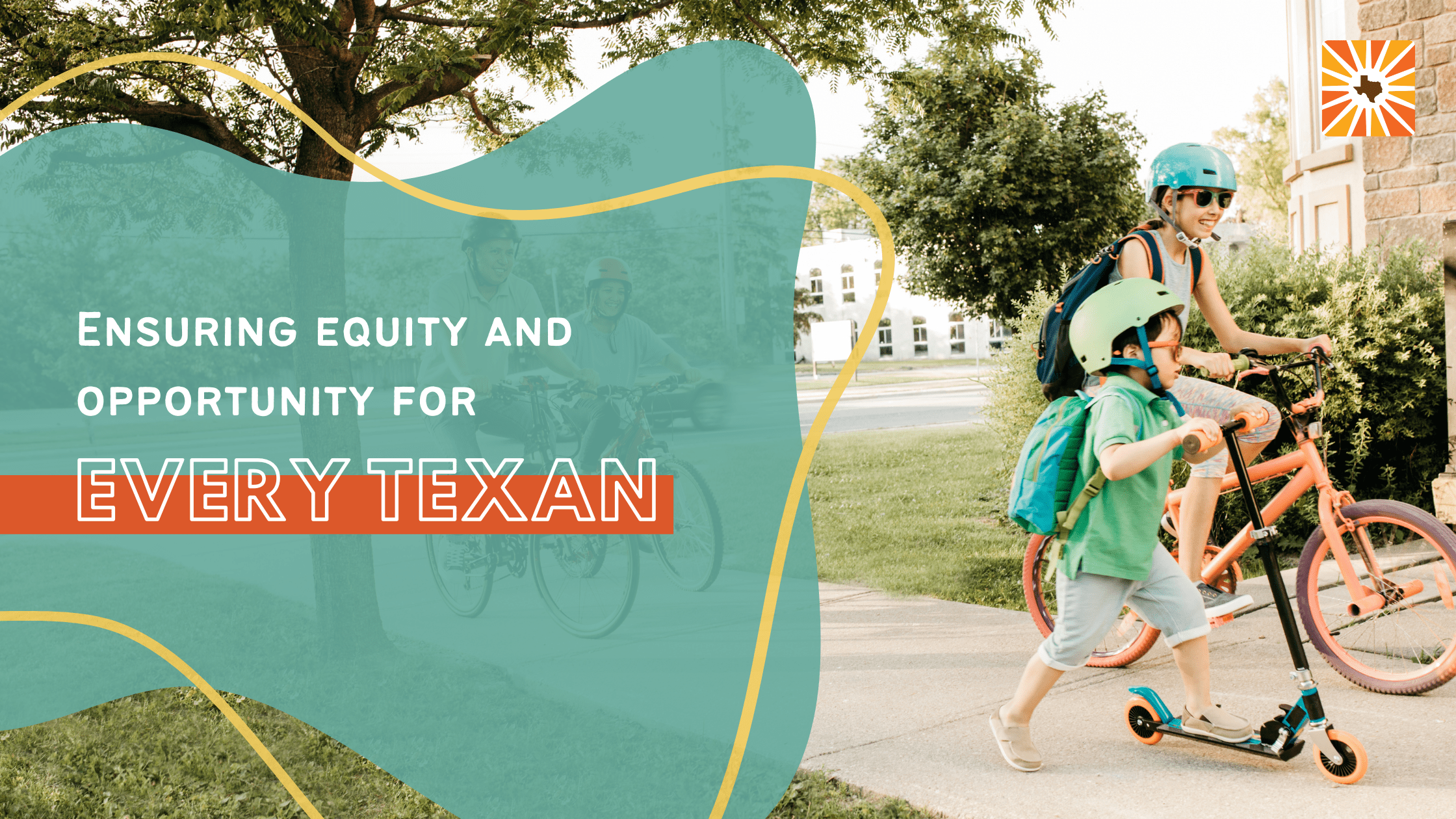View this testimony as a PDF here.
Harris County, the third largest county in the nation, has made a powerful stride towards advancing racial justice and economic equality by establishing a guaranteed income program. The program aims to provide low-income families unconditional financial support, empowering them to adequately meet essential needs such as housing, groceries, transportation, and healthcare. Harris County is reducing financial instability by addressing economic barriers for Brown and Black Texans to help create a more equitable society.
Harris County Program Targets Most Needy Zip Codes for Financial Safety Net
The Uplift Harris pilot program, approved by the Harris County Commissioners on June 6, 2023, will provide supplemental income to thousands of families living 200% below the poverty line — approximately $60,000 for a family of four. Funded by the Biden Administration’s American Rescue Plan Act and administered by the Harris County Health Department, the program will offer participants $500 per month for up to 18 months to directly support their households’ needs starting this fall. Participating households will be randomly selected from high-poverty zip codes or from households that participated in Harris County Public Health’s Accessing Coordinated Care and Empowering Self-Sufficiency program. According to Harris County Judge Lina Hidalgo, some eligible areas with a median income of $35,000 include Forest Acres, Acres Homes, South Park, East Six Jensen, Sunnyside, Northgate, Greater Fifth Ward, Settegast, Gulfton, and Galena Park.
Uplift Harris Addresses Economic Disparities Across Racial Groups in the County
The guaranteed income program will address widening disparities in one of the country’s most economically segregated counties, especially within marginalized brown and Black communities. According to the Kinder Institute’s survey of Houston residents in 2023, more than a quarter of residents are apprehensive about the state of the local economy in a county where 8% of residents live in persistent poverty. While many Houstonians reported economic discomfort in the survey, there are significant disparities in economic stability among different racial and ethnic groups.
For example, approximately 54% of Houston residents reported an annual income of $50,000 or less, with a notably higher percentage of Black (68%), Hispanic (65%), and Asian (57%) residents earning $50,000 or below in comparison to 31% of White residents.
A similar disparity exists in the ability of Houston families to cope with unforeseen financial emergencies. About 43% of Houstonians say they lack the financial resilience to withstand a $400 unexpected expense using their savings. When analyzing the data by race, Black (67%) and Hispanic/Latino (53%) residents are more than twice as likely to face challenges affording unexpected emergencies compared to their Asian (19%) and White (23%) neighbors.
Guaranteed Income Programs Pave the Way for Long-Term Societal Gains
Harris County’s guaranteed income program is part of a growing movement of more than 48 programs nationwide, including initiatives implemented in Austin and San Antonio. This network aims to provide financial safety nets inspired by the stimulus payments provided to households during the COVID-19 pandemic. Championed by Martin Luther King, Jr., guaranteed income programs (in the form of no-strings-attached cash transfers) have proven to boost economic prosperity, cultivate healthier lifestyles, and promote cohesive communities.
- Boost Economic Opportunity: Guaranteed income programs establish a minimum level of financial security, enabling individuals to handle unplanned emergencies and potential opportunities. For instance, a six-month pilot program conducted in Austin demonstrated that participants modified their working hours to engage in educational activities, part-time employment, or caregiving responsibilities. Additionally, some recipients used the temporary funds to save for improved transportation or to access higher-paying jobs in different neighborhoods. Furthermore, in Austin, participants demonstrated improved housing stability, with decreased late rent payments and lower evictions.
- Cultivate Healthier Lifestyles: Guaranteed income programs positively impact health and well-being. A University of Pennsylvania study revealed that guaranteed income recipients in Stockton, California, reported enhanced mental health compared to those not in the program and were less stressed about where their next meal would come from. The recipients could purchase larger quantities of food and secure better support for their medical care, both expected and unexpected. Participants described a transformative shift from scarcity to stability, which allowed them to prioritize connecting with loved ones and enjoying moments of relaxation. This newfound financial security provided recipients with valuable time for self-care and attention to their physical health.
- Promoting Cohesive Communities: By establishing a safety net and empowering individuals, guaranteed income programs are vital to promoting more inclusive and cohesive communities. An example of the positive impact of guaranteed income is the State of Alaska. Since 1982, Alaska has provided all its residents with an annual payment of about $3,000 simply for being state residents. This initiative has yielded remarkable results, with the state achieving among the country’s lowest poverty and inequality rates while attaining the highest overall well-being level. By reducing inequality, individuals, regardless of their income level, can experience a strong sense of belonging, finding value and support in their community.
Empowering Communities and Building Equity Through Unconditional Resources
One of the most effective ways to alleviate poverty is through no-strings-attached resources, which allow people to exercise agency in allocating those resources where they are most needed. The Uplift Harris pilot program exemplifies this approach, aiming to enhance economic prosperity, cultivate healthier lifestyles, and promote cohesive communities. This program takes a significant step toward building a more equitable and prosperous county by offering crucial supplemental income to communities most in need, namely brown and Black residents.
